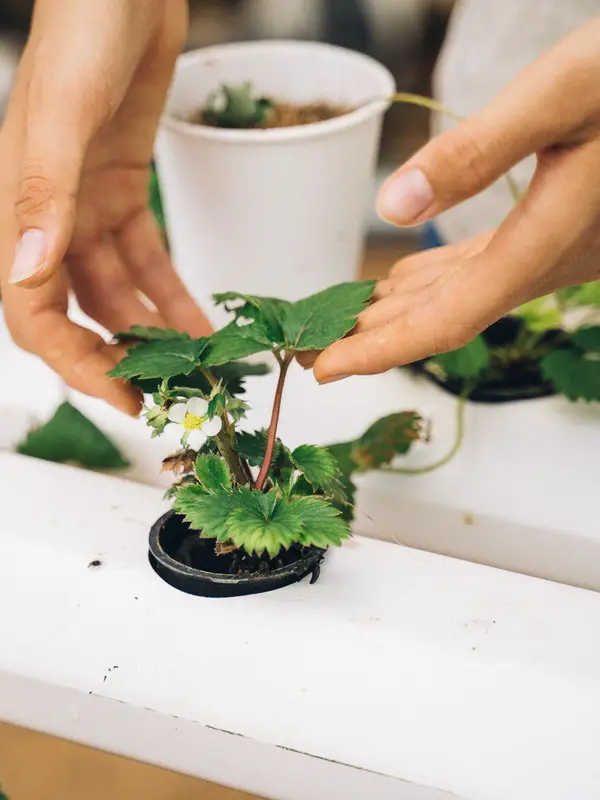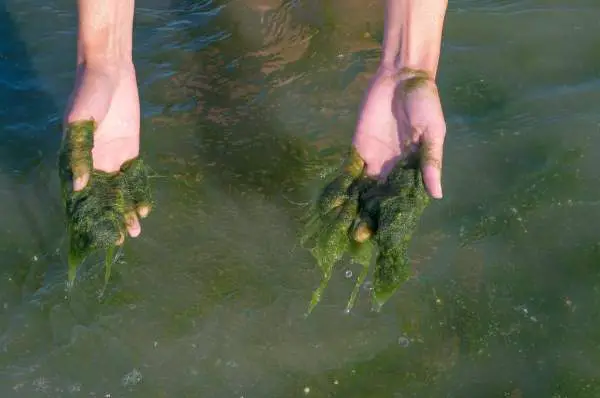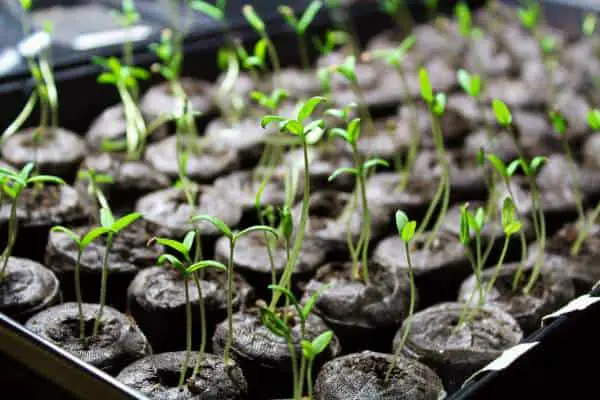When beginner growers first start running a hydroponic setup, one of the first problems they encounter is what we call “Nutrient Burn” or “Nute Burn”.
The problem sounds much worse than it actually is, and manifests from growers who give their plants too many nutrients or fertilizer, this results in excess nutrients. The way it manifests comes in a couple of differing ways. The first leaves appear scorched on the tips, and the second area, which isn’t as obvious, is that of root burn.
This can be more severe on your plants as there will be the drying rims of the leaves. Roots, which are turning brown, will accompany this, and plant growth will be slowed quite considerably.
Here, we will look at all you need to know about the exact causes of nutrient burn, and what you can do to fix the problem and prevent it from occurring again.
Important: Cannabis plants often experience nutrient burn as well. In this article, we will focus on how to spot and fix this issue in hydroponic systems.
Why Do Plants Get Nutrient Burn?
Because it is down to the grower to provide the correct nutrients to plants in a hydroponic system, the problem ultimately comes from the growers “overfeeding” their plants.
A logical thought when first beginning a system can be, the more nutrients, the better my plants will grow.
Unfortunately, this is far from reality. When growers give their plants excess nutrients, it leads to them being ‘burned’ in either of the two ways previously mentioned. To fully understand why this happens, it is good to know what these burns are.
These spots are not physical burns as if the plants were on fire. These are more like burns you get on your skin from a toxic compound. Nitrogen is one of the major compounds that make up hydroponic nutrients.
Even though overfeeding plants is the main cause of this problem, it can stem from other areas.
- Mixing nutrients too strong
- Over-watering – plants need dry periods where they can absorb oxygen
- Boosters for blooms – used on some plants, and when used too often or too strong it causes toxicity
- Plant growth stimulants – if these are used to frequent, it can cause dwarfism in plants and they will try to absorb too many nutrients
Once you begin overloading your solution with these compounds, your mixture quickly turns into a toxic substance. Hence, this is where leaves begin burning. Any grower who overfeeds their plants can spot the following signs of nutrient burn.
These are early signs of nutrient burn that your plants are over-fed and will end up with a nutrient burn.
- Tips of leaves burn and turn yellow
- Leaf tips turn bright green
- Leaves turn darker green
- Stalks and branches may turn dark red. Purple of magenta
- Leaf tips bend at 90 degrees
The leaves affected by the issues described above aren’t able to access light and perform photosynthesis, which is crucial for your plant to survive.
How Do I Fix Nutrient Burn?
We saw Nitrogen is one of the main compounds, which leads to these issues; it isn’t the only one though. Once plants are reaching the end of the vegetative stages of growth, starting the budding and then the flowering stage, plants will be looking for more calcium and magnesium.
If these are overfed, the same symptoms will transpire in your plants. Fixing the problem may appear daunting to new growers, yet it is easier than they may think.
If you spot some of the obvious signs of nutrient burn, follow these simple steps to save your plants.
- Get rid of burned or damaged leaves
- For extra security, trace backward on the calyx clusters to their supporting branch and remove the entire floret.
- Discard any dead leaf matter as this will rot and cause contamination
- Flush your growing pots and the growing medium with clean pH-balanced water.
- Check your tank’s pH and EC levels. Adjust this using freshwater only. You can drain your system to be sure you have no nutrient excess in your reservoir. Run for 24-hours with just fresh water and test EC. If high, drain and repeat the process, and check. Continue until your EC levels are acceptable.
- Depending on the extent of the nutrient burn, you can ease back on the nutrients in your mixture and supplement this with an organic liquid tea for around seven days.
How to Pevent Nutrient Burn?
This kind of problem usually happens by mistake, and for this reason, it can be something, which is easy to prevent from happening again.
Taking on some, good habits can help prevent this. Here are some pointers, which will help prevent nutrient burn:
- Use the right nutrients for the correct growth stage
- It is advisable to use 3/4 strength of what is recommended on the packaging – manufacturers are not always right
- Use digital pH/ EC meters to check your nutrient strength at regular intervals or when you are topping up your reservoir
- Always flush your growing medium and pots with your system to stop salt buildup
- Use the best measuring device in order to get the right amount of nutrients. A kitchen-measuring spoon, which is exact to the dose, makes things easier
- Never look down on the line of measuring jugs. Always look at eye level when reading measuring lines
- Be sure to use distilled water, as this won’t aggravate the problem by adding more nutrients
As you go through all of these steps to eradicate the problem, you need to try to figure out what caused it in the first place. Fixing the issue is only good if you know what not to do next time.
Additional Steps for Prevention
One of the main things beginners do is not fully understand their plants’ requirements. Each type of plant differs. Understanding this as well as what is already in your solution are the very first steps in prevention.
Different crops do have different requirements. A good rule to follow is that leafy crops like herbs, spinach or lettuces need higher levels of nitrogen. If you are growing fruits like cucumbers, peppers, eggplants, and tomatoes, then these will be seeking lower amounts of Nitrogen.
If you attempt to grow any root vegetables, these require higher amounts of potassium.
Regardless of which plant type you are growing, there are different nutrient requirements for different development stages. Understanding what plants need in their flowering or bloom phase as compared to their growth or vegetative stage can make a massive difference.
One final thing, which has an effect, is where your plants receive their light source. If you are using grow lights indoors for your crops, these will again be looking for different nutrients and levels than crops grown outdoors.
Generally speaking, crops require more nitrogen if they are receiving full amounts of daylight, or they are being exposed to high doses of artificial lighting. This has more of an effect when crops are outdoors.
If your plants are following regular growing seasons, crops that produce fruits will be looking for more potassium in the late fall or winter when levels of light are reduced. Although the levels of Nitrogen and Potassium can be increased to double the requirement in wintertime, this will not be the case under grow lights where conditions will be consistent.
Problems with Concentrated Nutrients
It can be a good cost-saving to use concentrated nutrients. However, the use of these needs plenty of due care and attention. These concentrated formulas are often where new growers become mixed up and don’t fully understand the bottle’s instructions.
Not making a conversion in your quantity can leave plants open to burn straight away. As well as this, if these nutrients go anywhere near your plants in their undiluted form, they can quickly kill your crops. No grower should be mixing concentrated formulas in their grow room.
Conclusion
Adding too many nutrients won’t deliver bigger plants and larger fruits. This is a common mistake, yet when you look at all the above information, you can see it can be resolved quickly, and while saving your plants.
The good thing is that any grower can learn from their mistakes, so for this to happen a second or a third time? There is no excuse.
There is only so much you can give your plants before you smother them. It is like being a regular parent with your child. Give them what they require and they will blossom, give them too much, and the results are never what you expect.
Related Questions
Is nutrient lockout the same as nutrient burn?
The two are similar, and some of the symptoms may appear to be the same. However, the nutrient lockout is where your plants are unable to absorb the nutrients you are giving them.
What causes nutrient lockout?
Over time, your pots and growing medium will have an excess of salts that build up in certain areas. If these are allowed to carry on accumulating, they can bind some of the nutrients and prevent them from being available to your plants.
How do I fix nutrient lockout?
The good thing is you can solve nutrient lockout by following the same steps as for nutrient burn. Although these two things are different, they cross paths and begin to show similar symptoms. The main thing is to use plain water to dissolve and flush this salt accumulation from your system. If these remain, the problem will occur as soon as you begin adding more nutrients.





